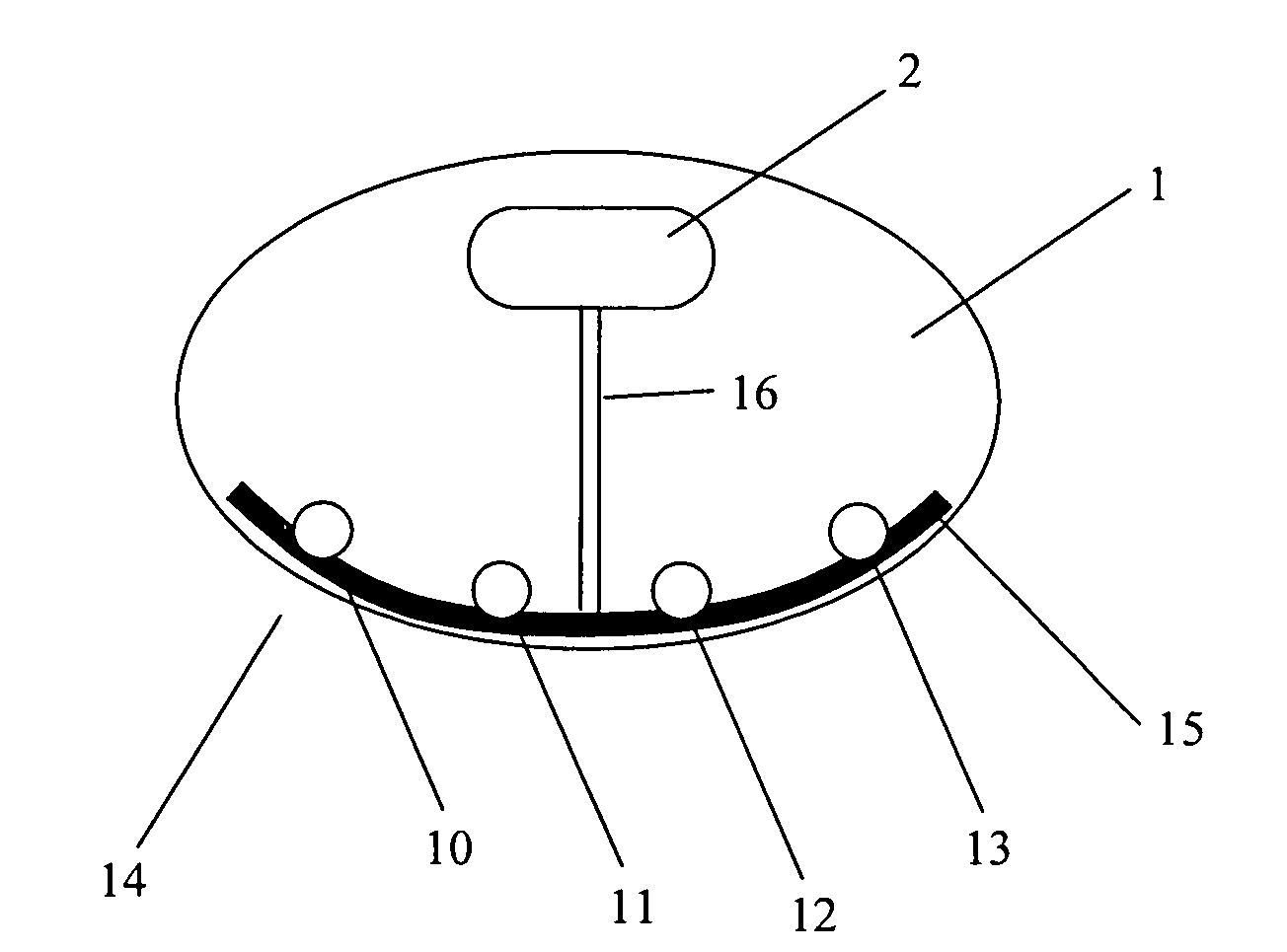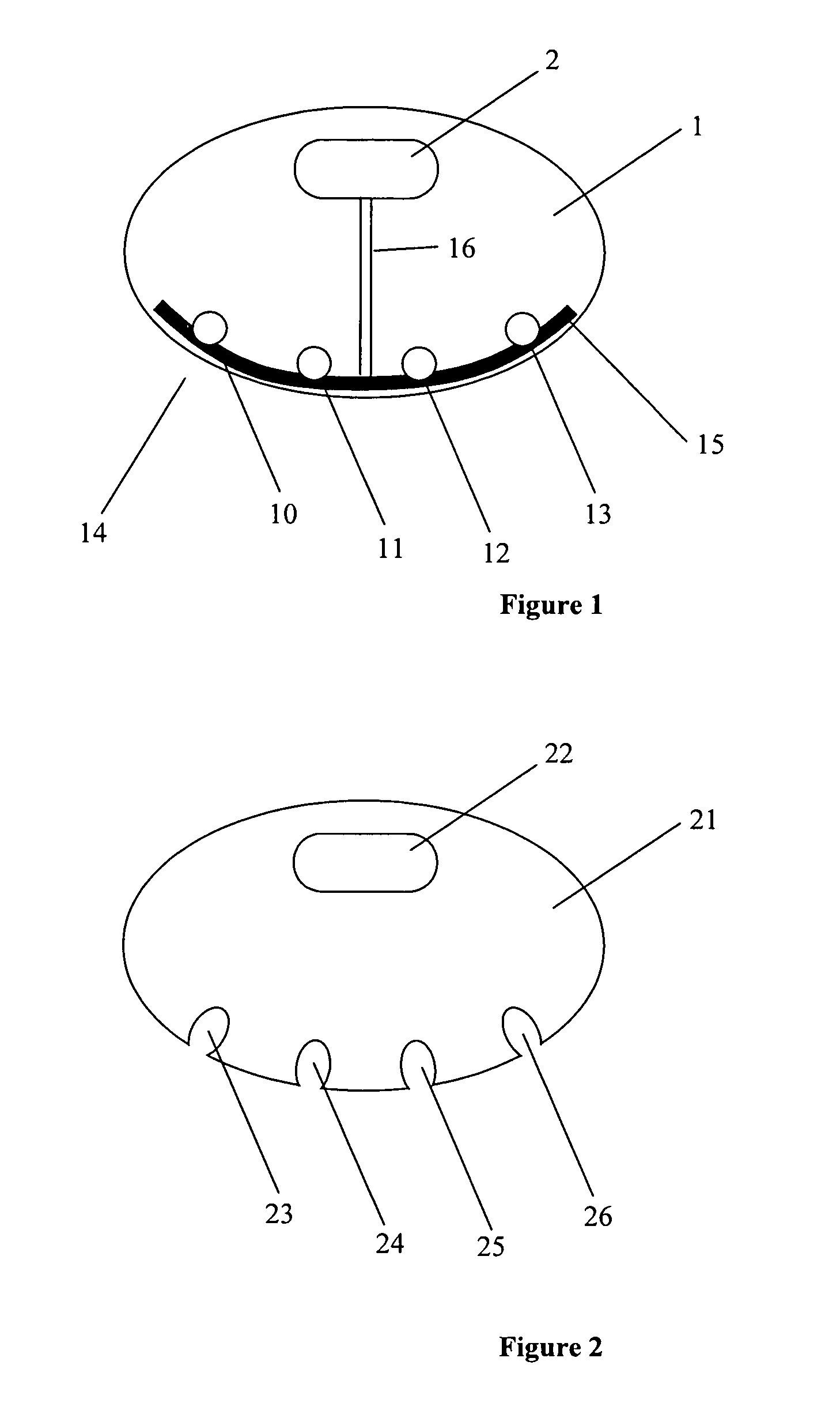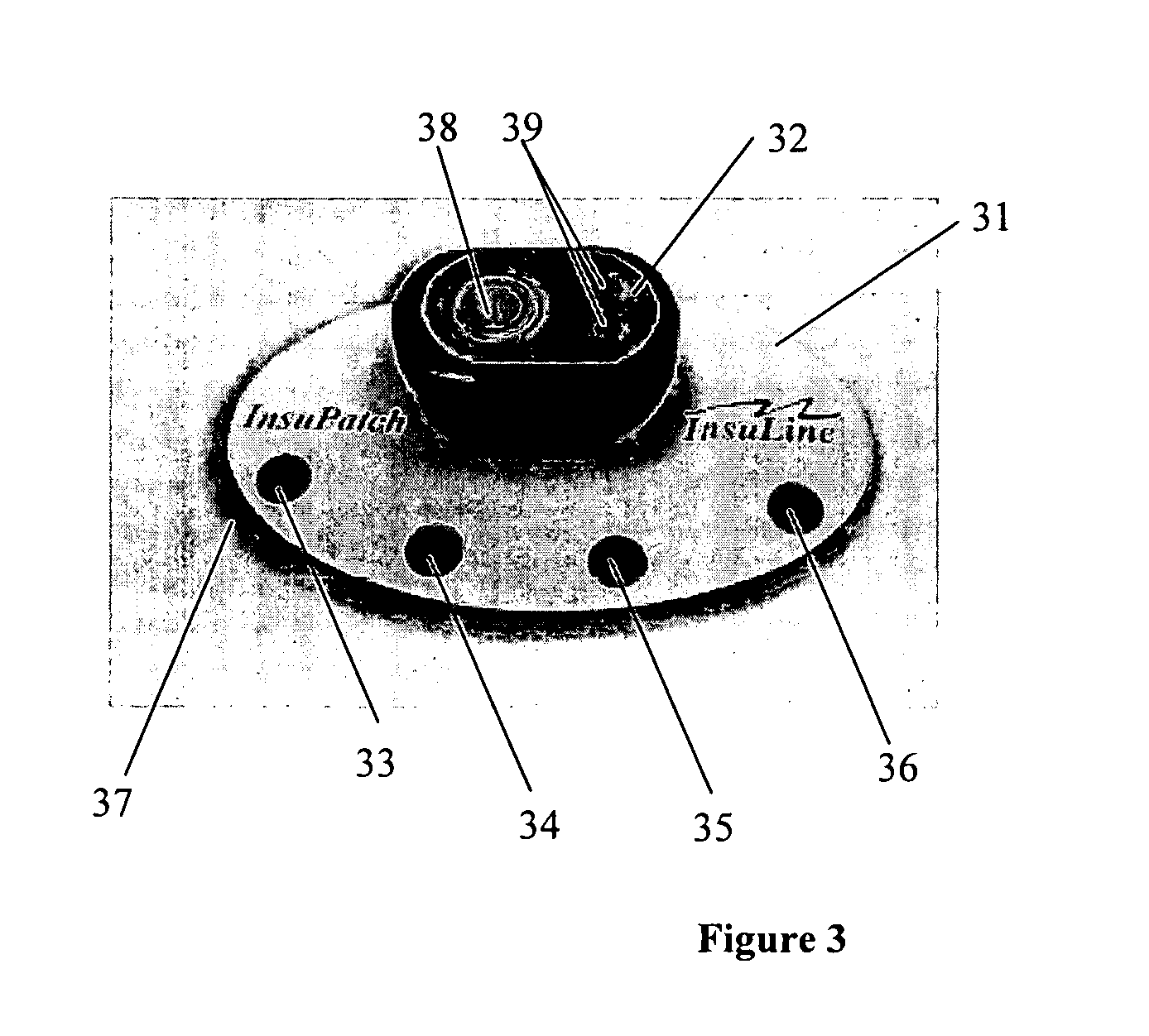[0008]In some embodiments, the present invention relates to systems, devices and methods for injecting drug(s), substances and / or chemicals into a patient having a tissue treatment element for improving effectiveness of
drug delivery upon injection. The device, according to some embodiments of the present invention, provides for a device for improving performance of
drug delivery by injections. Optionally, some embodiments of the present invention provide for a device that further provides an additional treatment to a tissue region where the drug is delivered. The treatment can be utilized to improve
drug delivery process by improving the drug's pharmacokinetic (“PK”) and / or pharmacodynamic (“PD”) profile. The treatment may include but is not limited to methods and devices described in PCT / IB2008 / 051049 and in PCT / IB2008 / 051044, disclosures of which are incorporated herein by reference in their entireties. Optionally, the treatment may come in various forms, for example, including an
analgesic, vasodilator, or the like. Optionally, the treatment may be any form of treatment that leads to an improved vasodilatation of the tissue being injected, where the treatment, includes but is not limited to, exposing the tissue region to an energy,
radiation, heat, mechanical vibrations, suction, massaging, acoustic stimulation, electrical stimulation, injection of an additional substance(s), or any combination of the above to improve drug's pharmacokinetic and for pharmacodynamic profile. Each treatment type can be configured to have a separate protocol in order to evoke the necessary reaction such as vasodilatation or the like.
[0010]In some embodiments, the induced neural response, such as the nociceptive
axon reflex, also optionally induces widening of the capillary pores and increasing the capillary wall permeability. This effect is also significant for improving the absorption of the drag through the capillary wall.
[0011]In some embodiments, the applied treatment may lead to a reduction in the variability of the drug absorption in the blood or
lymph system and its local and systemic effects. For example, heating the tissue region in the vicinity of the area of drug delivery to a preset regulated temperature during and / or after the
drug injection and absorption into the blood may cause local blood
perfusion at that region to become more reproducible and the drug absorption process more uniform and reproducible as well. Also, by reducing the
delay between
drug injection into the tissue and absorption into the blood
system, the variability of
drug action induced by the delayed profile can be reduced. In some embodiments, the temperature of the region adjacent to the injection region can be regulated for longer periods, but the cost may be the
energy source volume and weight. Thus, for minimization of the
energy source size the heating period or heating temporal profile can be optimized in relation to the period of the drug injection and absorption into the blood. In some embodiments of the present invention, the treatment can be tuned according to the injected
insulin dose and / or type. For instance, in case of heating the vicinity of the
injection site the heating period for larger
insulin dose can be longer to allow rapid absorption of the larger
insulin dose.
[0012]In some embodiments, a drug's
temperature sensitivity can be accounted for so as to avoid
protein denaturisation. In some embodiments, the delivered drug is insulin.
Insulin is a temperature-sensitive
protein. Thus, to avoid damage to insulin during the
treatment protocol, heat can be limited so as to ensure
efficacy of the delivered drug. The
treatment protocol can be configured to control the temperature or the location of the
treatment delivery site so as to not damage the drug. For instance, heating some types of insulin above 37° C. might damage it. Thus, the tissue around the injection site can be heated to induce the required neural response without heating the insulin itself above 37° C. For example heating the tissue at a distance of 10 mm around the injection site to 38.5° C. provides a significant vasodilatation without heating the injected insulin above 37° C.
[0013]In some embodiments, the present invention relates to method and device for improving clinical outcome of IDDM patient by combining injection of
rapid acting insulin analog with heating the
skin at least lcm apart of the
infusion site to 37-39° C. for a period of 30-60 min after the injection. This combination is be configured to provide a significant improvement of the insulin PK and PD without heating the injected insulin above 37° C.
[0014]In some instances, instead of using
rapid acting insulin, a mixed formulation (a mix of at least two insulin formulations with different absorption times, such as
rapid acting insulin analog and regular insulin) can be used to provide both the fast absorption of the rapid acting
insulin analog at the
initial phase of the insulin absorption (such as 0-90 minutes from
insulin injection) and then slower
pharmacokinetics of the insulin action at the second phase of the insulin action (such as 90-200 min). This combination can be more beneficial, for instance, for fat reach meals in which the time that takes the food to be digested and the blood glucose excursion to diminish is longer.
 Login to View More
Login to View More  Login to View More
Login to View More 


